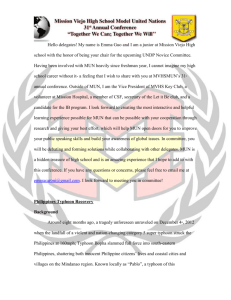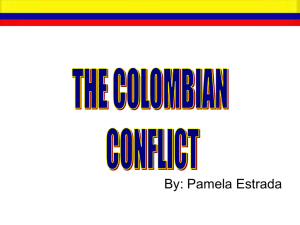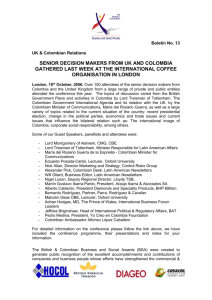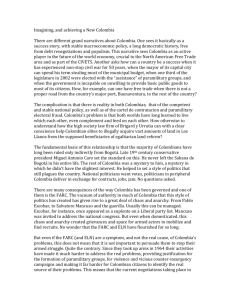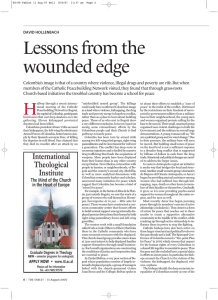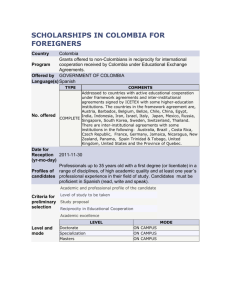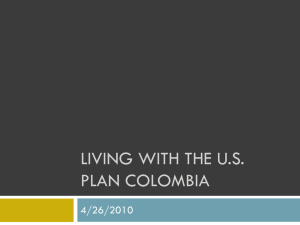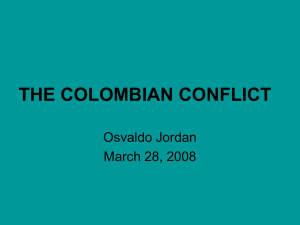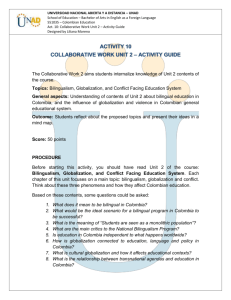UNDP Topic: Conflict in Columbia Hello delegates! My name is
advertisement
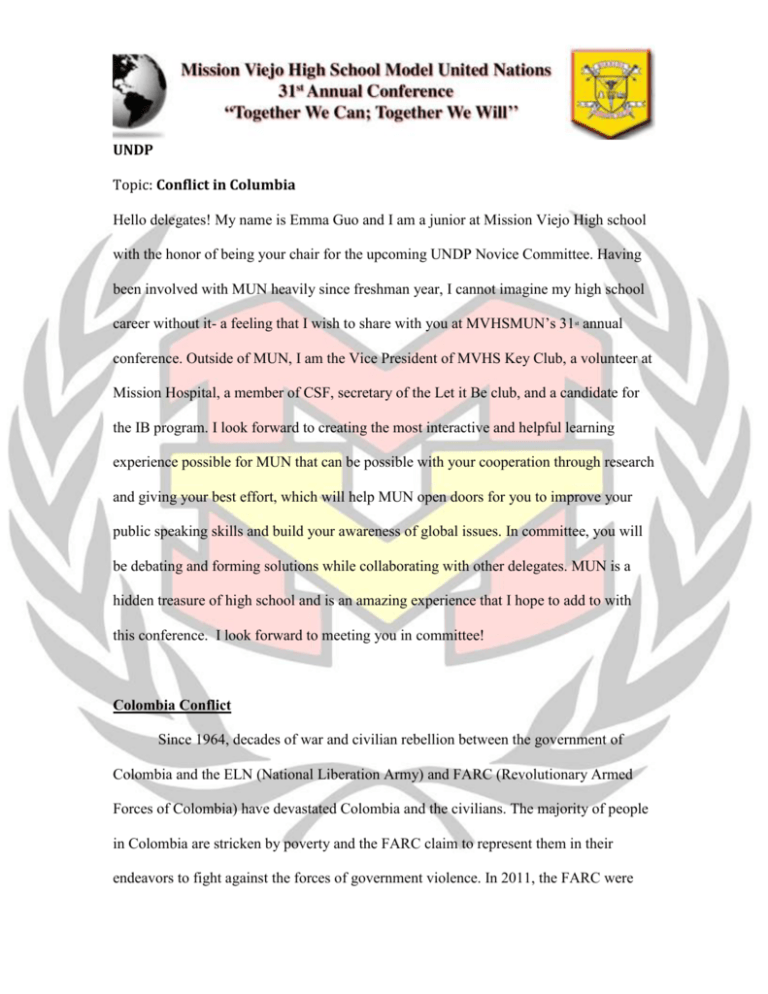
UNDP Topic: Conflict in Columbia Hello delegates! My name is Emma Guo and I am a junior at Mission Viejo High school with the honor of being your chair for the upcoming UNDP Novice Committee. Having been involved with MUN heavily since freshman year, I cannot imagine my high school career without it- a feeling that I wish to share with you at MVHSMUN’s 31st annual conference. Outside of MUN, I am the Vice President of MVHS Key Club, a volunteer at Mission Hospital, a member of CSF, secretary of the Let it Be club, and a candidate for the IB program. I look forward to creating the most interactive and helpful learning experience possible for MUN that can be possible with your cooperation through research and giving your best effort, which will help MUN open doors for you to improve your public speaking skills and build your awareness of global issues. In committee, you will be debating and forming solutions while collaborating with other delegates. MUN is a hidden treasure of high school and is an amazing experience that I hope to add to with this conference. I look forward to meeting you in committee! Colombia Conflict Since 1964, decades of war and civilian rebellion between the government of Colombia and the ELN (National Liberation Army) and FARC (Revolutionary Armed Forces of Colombia) have devastated Colombia and the civilians. The majority of people in Colombia are stricken by poverty and the FARC claim to represent them in their endeavors to fight against the forces of government violence. In 2011, the FARC were 7,000 strong while the ELN was 3,000 strong. The government has had military conflict with the FARC and ELN for decades, claiming to represent the dream for stability and governmental order; however, both sides have committed numerous violations against human rights, drug trafficking, terrorism, and the death toll has escalated to over 200,000 soldiers and civilians since 1958. In 1920, disputes between peasants and political parties over land ownership worsened the conflict, escalating into the armed Colombia conflict. La Violencia, military conflicts between the Colombian Conservative and Liberal Party, was caused by the assassination of Jorge Gaitan and played a large part in the unfolding of the Colombian Conflict into the international complicated deadly conflict it is today. Many countries have been involved since the beginning of this dispute, and the ongoing war between the government and FARC/ELN has carried on as well as tension and rivalry that have both refused to submit to the other side for decades. In 2012 and 2013, Colombian civilians have shown widespread support in various peace protests and processes that hope to end this conflict. Along with drug trafficking, both have violated human rights through torture, assassinations, massacres, and various forms of civilian abuse. The FARC’s funding comes from a widespread cocaine trade, resulting in millions towards illegal military rebels fighting the government. The extent of destruction is huge due to the gradual and unrelenting violent crimes. The Colombian society has had to endure crimes against humanity as a toll for the ongoing dispute between government and rebel forces. Progress towards peace in times of the Colombian Conflict could be brought to light through efforts of connecting peace group societies both within the country and outside of the country on an international basis either formally with governmental organizations or informally through non-governmental organizations. The military forces of the two conflicts need to reach a consensus under the terms that military conflict and drug traffic be temporarily suspended to reach an agenda of a meeting. Possible solutions would ideally halt the drug trafficking and explore methods that could work as an alternative to military conflict and illegal trade.
